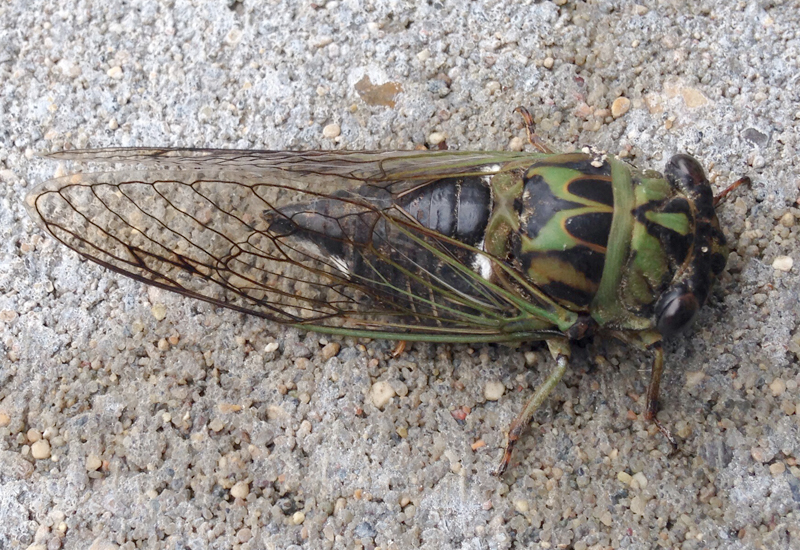Have you ever ambled through a sun-drenched garden, surrounded by lush greenery, with the air vibrating with a symphony of buzzing? If you’ve tuned into the melodious cacophony of late summer, you’ve likely encountered the annual cicada, an enigmatic insect that captivates both young hearts and curious minds. This formidable creature not only heralds summer’s final days, but it also serves as a fascinating subject of exploration for those willing to dive deeper into the mysteries of the natural world.
Annual cicadas are often misunderstood, relegated to the confines of noisy nuisances rather than celebrated for their intriguing biology and life cycle. Emerging from their underground homes after a year beneath the soil, these unique insects grasp the attention of anyone who stops to observe their vibrant green or brown exoskeletons glinting in the sun. They possess a striking allure that invites inquisitive souls to learn more. So, buckle up and prepare for an enthralling journey into the world of annual cicadas!
The Basics: Anatomy and Lifecycle
Before we dive into the deeper waters of cicada culture, let’s get acquainted with their anatomy and lifecycle. Known scientifically as members of the family Cicadidae, these insects are characterized by their stout bodies, large eyes, and expansive wings. They measure about two inches in length, making them one of the larger insects you can encounter in North America. Cicadas can be divided into two main groups: the periodic cicadas and the annual cicadas. As the name suggests, annual cicadas emerge yearly—a delightful occurrence that takes place during the warmest months.
Their lifecycle is nothing short of a metamorphic marvel. Eggs are laid in the twigs of trees, and upon hatching, the juvenile cicadas, commonly referred to as nymphs, drop to the ground. These nymphs will then burrow underground, where they feast on the sap from plant roots. This subterranean existence lasts approximately one to two years before the nymphs emerge as adults, climbing up trees to shed their skins in a spectacular transformation known as eclosion. This act of molting is not only an enchanting spectacle but also signifies their readiness to create a symphony of sounds that will persist throughout the summer.
The Sound of Summer: Why They Sing
One of the most remarkable features of annual cicadas is their unmistakable song. Their ability to produce sound is attributed to specialized membranes called tymbals, which they contraction rapidly to generate their iconic buzzing. Each species of cicada has its own unique song, and these auditory masterpieces serve several purposes. Males utilize their melodic tunes to attract females, establishing their territory while warding off potential rivals. In a way, the cicada’s song is the essence of summer, transforming the everyday environment into an orchestra of nature.
As you venture outdoors, you’ll notice how these sounds change throughout the day. Generally, the cicadas are more vocal in the mid-afternoon, when temperatures peak. To the untrained ear, their song may seem monotonous, but a closer listen reveals a complex tapestry of pitches and rhythms, capable of resonating with the vibrant energy of a summer day. The brilliance of this phenomenon is that it showcases the duality of nature—both the intricacies of individual existence and the symphony of collective life.
Cultural Significance: Myths and Folklore
Throughout history, cicadas have found a prominent place in various cultures worldwide. In many traditions, they symbolize rebirth and transformation, echoing their remarkable lifecycle. Known for their ephemeral existence, cicadas also serve as a metaphor for the fleeting nature of life, reminding us to bask in the warmth of the moment before it slips away. In Japan, cicadas are celebrated in poetry and art, reflecting their deep roots in the cultural consciousness.
The annual cicada, specifically, is a bearer of the joys and tribulations of summer. Their emergence marks not just a biological event but a seasonal celebration. Many young people find solace in their songs, using them as the soundtrack for summer adventures with friends. Whether it’s a backyard barbeque, a day at the beach, or a lazy afternoon lounging in the sun, cicadas encapsulate the spirit of youthful summertime exploration.
Conservation: The Call for Awareness
As exhilarating as the world of cicadas may be, it also pushes us to consider the conservation of their habitats. Urbanization, climate change, and habitat destruction signify growing threats to cicada populations and the ecosystems where they thrive. By cultivating awareness and appreciation for these creatures, young people can actively participate in conservation efforts, whether that involves planting more native flora, reducing pesticide usage, or advocating for environmental protection.
Engaging with nature and the vibrant life cycles of creatures like the annual cicada fosters a profound appreciation for biodiversity. By nurturing this bond with the environment, the younger generation can contribute to a sustainable future, ensuring that the symphonic serenade of cicadas continues to be a cherished backdrop for many summers to come.
So next summer, as the air fills with the pulsating rhythm of cicadas, take a moment to pause and revel in nature’s artistry. Let the annual cicadas inspire curiosity and wonder, bridging the gap between youth and the ancient art of the natural world. Take a leaf out of their book, and relish every fleeting moment, for just like summer, cicadas are a reminder that beauty often lies in transience.









Leave a Comment